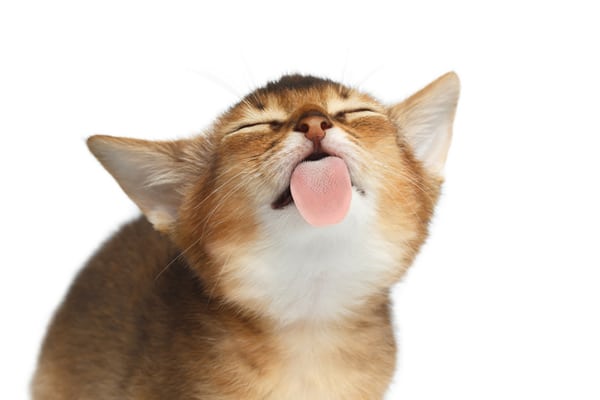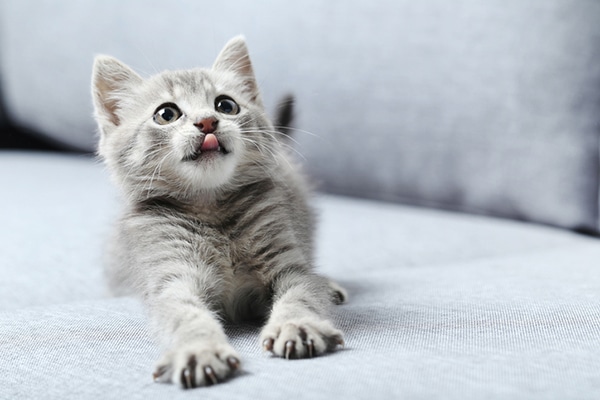In the enduring debate of which pet species reigns supreme, you often hear the classic canine putdown “Dogs drool and cats rule!” It makes sense because cats don’t drool — or do they? If you’ve ever wondered if cat drooling should signal a trip to the vet, we’re here to set the record straight.
Cats Drool — But Not Normally

Many dogs drool a lot, and most of us think nothing of it, but most cats usually don’t drool unless their mouths are hurting. “The typical cat does not drool for no reason,” says Tracey Jensen, D.V.M., Dipl. ABVP, medical director at Wellington Veterinary Hospital in Wellington, Colorado. “If they’re drooling, something’s wrong and they need to be seen by the veterinarian to get to the bottom of it.”
Cat Drooling is Typically Associated With Pain
If swallowing hurts, a cat will just allow the saliva to leak out of her mouth instead. Lots of things can cause mouth pain in cats, including dental disease (gingivitis) or a broken tooth, exposure to toxic chemicals or plants, tumors inside the mouth, a string or other foreign body trapped under the tongue and ulcers in the mouth, which are sometimes caused by kidney disease. “Other clinical signs that may accompany drooling include halitosis (bad breath), decreased appetite, weight loss, reluctance to eat hard food or dropping food while eating,” says Cindy Charlier, DVM, Dipl. AVDC, of VDENT Veterinary Dental Education Networking & Training. “If a cat is drooling and the saliva is thick, discolored or blood tinged, or is accompanied by a mouth odor, then a medical reason for drooling should be considered.”
If Your Cat is Drooling, it’s Time to See the Vet
Since cat drooling is frequently linked to pain, schedule a visit to the vet as soon as possible. First, the vet will check to see if your cat has lost any weight. If your cat’s mouth is hurting, she might not be eating normally. Next, the vet will perform a thorough physical exam, checking the mouth and the entire body. “Sometimes, depending on the degree of discomfort, the exam can only go so far because there is so much discomfort,” explains Dr. Jensen, who is also past president of the American Animal Hospital Association (2015 to 2016). “In these cases, to really get a good look in their mouth we need to sedate them or give them pain medication.” If necessary, your vet might also want to take some X-rays of the mouth to see what might be lurking beneath the gum line.
So, Cat Drool is Abnormal — In Most Cases
In a very small percentage of cats, drooling can be normal. “In my 23 years of practice, I’ve only seen a handful of cats that drool and it’s more of a behavioral thing — they’re drooling as they purr,” Dr. Jensen says. “That’s usually in young cats, and they do it often and repeatedly. If this is a cat who has never drooled before, however, it would be extremely unlikely that this would be a behavioral response. It’s more likely there is some reason that cat does not want to swallow.” If your vet examines your cat and can’t find anything wrong, it very well could be that she is one of those strange cats for whom drooling is not the symptom of a problem.
Thumbnail: Photography by 5second/Thinkstock.
Read more about cat health on Catster.com:








